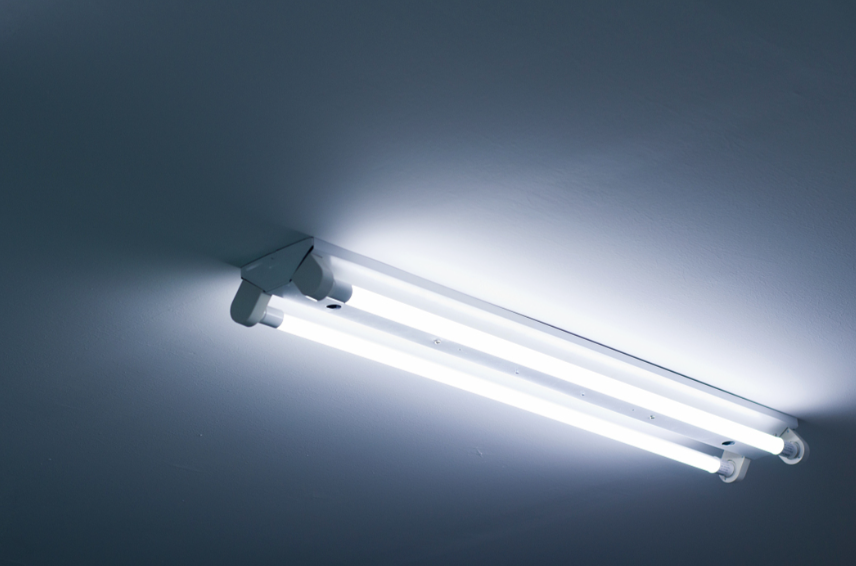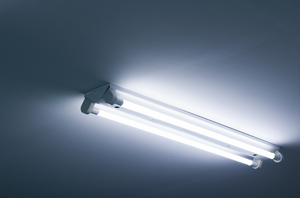
Standard and method for inspection of fluorescent lamp products Inspection service for goods and factories inspection
Lighting fixtures, as indispensable lighting equipment in daily life, their quality directly affects safety during use, energy efficiency performance, and visual comfort. The quality inspection of lighting fixtures is a systematic process that involves quality control throughout the entire process from raw material entry to finished product exit. This article will deeply analyze the factory inspection and quality inspection procedures, quality control key points, and testing standards for various types of lighting fixtures, providing comprehensive reference guidelines for purchasers, quality inspectors, and production enterprises.
I. Basic Knowledge of Lamps and Preparations Before Inspection
(1) Characteristics and Classification of Lamp Products
Lamps are lighting devices that convert electrical energy into light energy. The core technologies include light source modules, driving power supplies, cooling systems, and optical systems. According to the type of light source, they are mainly divided into LED lamps, energy-saving lamps, fluorescent lamps, incandescent lamps, and tungsten filament lamps, etc. According to the application scenarios, they can be classified into indoor lighting, outdoor lighting, commercial lighting, etc.
(2) Preparation for Factory Inspection and Goods Inspection
Technical document review: Check product specifications, CCC certification, CE certification, UL certification, energy efficiency label, and photovoltaic parameter test reports
Verification standard confirmation: Clearly define the applicable national standards (GB/T related standards) and the customer's specific requirements, including safety standards, performance standards, and energy efficiency standards.
Calibration of testing equipment: Ensure that the integrating sphere testing system, power analyzer, withstand voltage tester, insulation resistance tester, color temperature illuminance meter, etc. are within the calibration validity period.
Sampling plan determination: Based on the batch size, determine the sampling quantity and acceptance criteria in accordance with GB/T 2828.1-2003, and formulate the sampling inspection plan.
II. Key Points for Factory Inspection of Lighting Products
(1) Quality Management System Audit
Check whether the factory has established a complete quality management system (ISO9001 certification), and review the quality manual, procedure documents, and operation instructions.
Review the supplier management procedures, especially the evaluation records of key component suppliers such as LED chips, driving power supplies, and heat dissipation materials, including supplier qualification certifications and incoming material inspection standards.
Review the production process control documents and their implementation status, with a particular focus on the process parameter control of key procedures such as SMT soldering, lamp assembly, and aging tests.
Evaluate the effectiveness of the control procedures for non-conforming products and the corrective and preventive measures, including the processes of marking, isolation, review and disposal of non-conforming products.
(2) Key points of on-site production inspection
Incoming material inspection area: Review the inspection records of key components (LED light beads, electrolytic capacitors, heat sinks, power modules), and confirm the implementation of the IQC inspection standards
SMT Workshop: Evaluate the soldering accuracy, the reflow soldering temperature curve, and the quality control of solder joints.
Assembly workshop: Inspect the control of assembly process parameters, the balance of the production line, and the anti-static protection measures.
Aging test area: Check whether the aging time and test items meet the process requirements, and evaluate the product durability test standards.
Optoelectronic Testing Room: Verify the calibration status of the optoelectronic parameter testing system and ensure the completeness of the test data records.
III. Appearance Quality Inspection Standards
(1) Appearance Integrity Inspection
Shell Quality Inspection:
Inspect visually from about 0.5 meters away from the lamp fixture
No deformation, scratches, wear, paint peeling or dirt.
The color is uniform and there is no color difference.
The surface treatment is uniform and flawless.
Structural assembly inspection:
The fixing screws are all present and there is no case of missing installation.
Assembly of components and secure fastening of the lamp housing
The pins are not deformed.
The lamp tube does not shake and there is no looseness or abnormal noise.
(2) Inspection of Labels and Packaging
Product Labels:
The specifications and models, as well as the technical parameters, are clearly presented.
The certification mark is correct.
Production information is complete.
Packaging quality:
The outer packaging is intact and free of any creases.
The inner packaging is well protected.
The identification is correct and clear.
IV. Electrical Safety Performance Testing
(1) Basic Electrical Parameter Testing
Input Power Test:
Use the digital multi-functional power tester
Operating voltage: Type A: AC 110V; Type B: AC 220V; Type C: AC 110V/220V
The power value meets the specification requirements.
Power factor test:
Use the digital multi-functional power tester
Measurement of power factor under different voltages
Compliant with energy efficiency standards requirements
(2) Safety and Reliability Testing
Pressure Resistance Test:
Connect the input end for communication
An AC 3000V voltage is applied between the input terminal and the metal casing.
Leakage current is set at 5mA and remains without breakdown for 3 seconds.
Insulation resistance test:
Connect the input end for communication
Insulation resistance between the input terminal and the metal casing
Resistance value > 100 MΩ
Ground continuity test:
Between the grounding terminal and the accessible metal components
Resistance value < 0.1Ω
V. Photoelectric Performance Testing
(1) Photometric Parameter Testing
Luminous Flux Test:
Use the integral sphere testing system
Test the luminous flux after turning on the lamps
Meet the nominal value requirements
Lighting effect test:
Calculate the ratio of luminous flux to input power
Meets the requirement of ≥80lm/W
Energy efficiency rating assessment
Illuminance distribution test:
Use a distributed photometer
Test the spatial light intensity distribution
Light distribution curve analysis
(2) Chromaticity parameter testing
Color temperature test:
Test the color temperature after turning on the lights
Complies with the range of 5400K - 5800K
Color temperature consistency check
Color coordinate test:
Test the color coordinate values
Conforms to X = 0.33 ± 0.01, Y = 0.36 ± 0.01
Evaluation of color uniformity
Color Rendering Index Test:
Test the color rendering index Ra value
Meets the requirement of Ra > 70
Special color index inspection
VI. Environmental Adaptability Test
(1) Temperature Rise Test
Temperature rise of key components:
Temperature of solder joints of LED light beads
Drive power supply temperature
Surface temperature of the shell
Complies with safety standards requirements
Heat distribution test:
Infrared thermal imaging analysis
Hotspot identification and improvement
Thermal performance assessment
(2) Durability Test
Switch Life Test:
Frequent on-off testing
The number of tests is in accordance with the standard.
Functional stability verification
High temperature and high humidity test:
Temperature: 55℃, Humidity: 95%
Conduct continuous testing for 168 hours
Performance parameter verification
VII. Energy Efficiency and Environmental Protection Requirements
(1) Compliance with Energy Efficiency Standards
Energy efficiency grade testing:
Test the light effect value
Determine the energy efficiency rating
Energy efficiency label inspection
Standby power consumption test:
Test standby mode power consumption
Compliant with energy efficiency standards requirements
Power efficiency assessment
(2) Environmental Compliance
Hazardous substance testing:
RoHS Compliance Verification
REACH Compliance Check
Lead-free process confirmation
Recycling symbol:
Recycling label is correct
Material classification label
Environmental-friendly packaging materials
VIII. Analysis and Control of Common Defects
(1) Severe Defects
Safety Defects:
Insufficient pressure resistance test results
Insulation resistance does not meet the standard.
Poor grounding continuity
Functional Defects:
The light doesn't work.
Flash frequency is extremely high.
Expired prematurely
(2) Main Defects
Performance Defects:
Insufficient luminous flux
High color temperature deviation
The color rendering index is relatively low.
Process Defects:
Obvious appearance defects
Poor assembly
Identification error
(3) Minor Defects
Appearance defects:
Minor scratch
Slight color difference
The packaging is slightly damaged.
IX. Inspection Rules and Quality Determination
(1) Sampling Inspection Plan
Sampling standard: According to GB/T 2828.1-2003, General Inspection Level II
AQL standard:
Serious defect: AQL = 0.65
Main defect: AQL = 1.5
Secondary defect: AQL = 4.0
(2) Quality Grade Evaluation
Premium Grade: All indicators exceed the national standards.
First-class product: The main indicators meet national standards.
Qualified product: Basic indicators comply with national standards.
X. Conclusion
The quality inspection of lighting fixtures is a multi-dimensional systematic project that encompasses electrical safety, optical performance, thermal management, and environmental adaptability. Quality inspection personnel need to have a comprehensive understanding of product standards, inspection methods, and common quality issues in order to effectively control product quality. Manufacturing enterprises should establish a complete quality management system, especially strengthening control in aspects such as key component control, process optimization, and finished product inspection, to ensure that the products meet national standards and customer requirements.
Share this product

Standard and method for inspection of fluorescent lamp products Inspec
Lighting fixtures, as indispensable lighting equipment in daily life, their quality directly affects safety during use and visual comfort.
